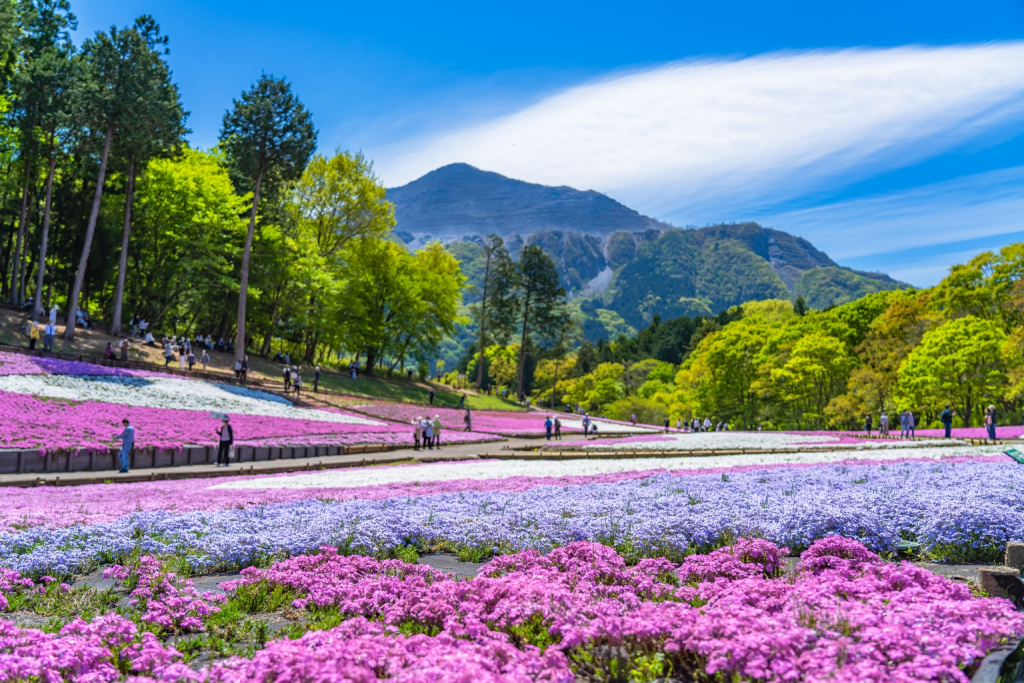Sakura season may be over for another year in the Kanto region, but there’s still an opportunity to enjoy the precious little pink flowers in the north of the country. They are, of course, what people tend to picture when you mention spring in Japan, yet there are plenty of floral delights to see beyond cherry blossoms. You can experience the magical wisteria of Tochigi, the brilliant baby blue eyes of Ibaraki and the mesmerizing moss phlox of Saitama, to name but a few. Here are seven recommended Japanese flower parks to visit in the coming weeks.

Copyright (c) 2019 faula/Shutterstock
1. Hitachi Seaside Park
If blue is your color, then Hitachi Seaside Park is the place to go this spring. It’s home to more than 4.5 million nemophila, commonly known as baby blue eyes. The ocean-like scene in April and May is magical. The same could be said about the fluffy red kochia (also known as summer cypress) in September and October. In truth, with seasonal flowers blooming throughout the year, this is a place worth visiting at any time. The 470-acre park used to be a bomb training ground for the US Air Force. Following several accidents, including some that resulted in death, the land was returned to Japan in 1973.
Access: An express train from Tokyo to Katsuta Station takes around 80 minutes. From there, a bus takes roughly 15 minutes to the park.
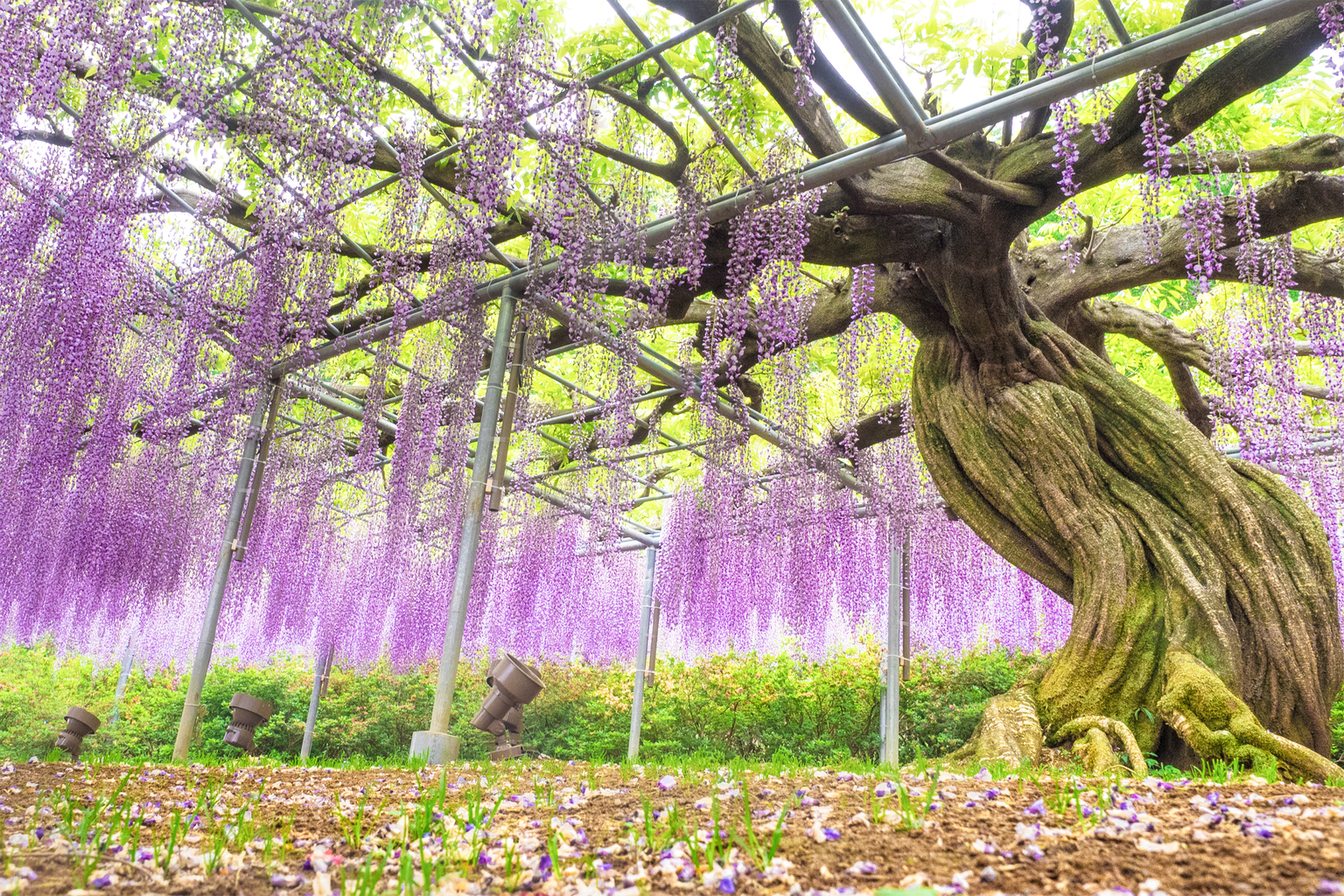
Copyright (c) 2017 Kanchana Pavitrapok/Shutterstock
2. Ashikaga Park
Ashikaga Park rose to prominence in 2014 when it was selected by CNN as one of the top 10 international travel destinations in the world. The reason for its inclusion: the park’s wisterias, which are a truly breathtaking sight. There are around 350 wisteria trees in total, including one that is more than 150 years old. Designated as a national treasure, it’s often described as the most beautiful wisteria tree in the world. It looks like a real-life version of the Tree of Souls in James Cameron’s film Avatar and is particularly spectacular when illuminated in the evenings. The Fujinohana Monogatari Ofuji Festival runs until May 22.
Access: From Tokyo, take the Shinkansen (40 minutes) or Utsunomiya Line (just over an hour) to Oyama Station. From there, transfer to the JR Ryomo Line to Ashikaga Flower Park Station (34 minutes).
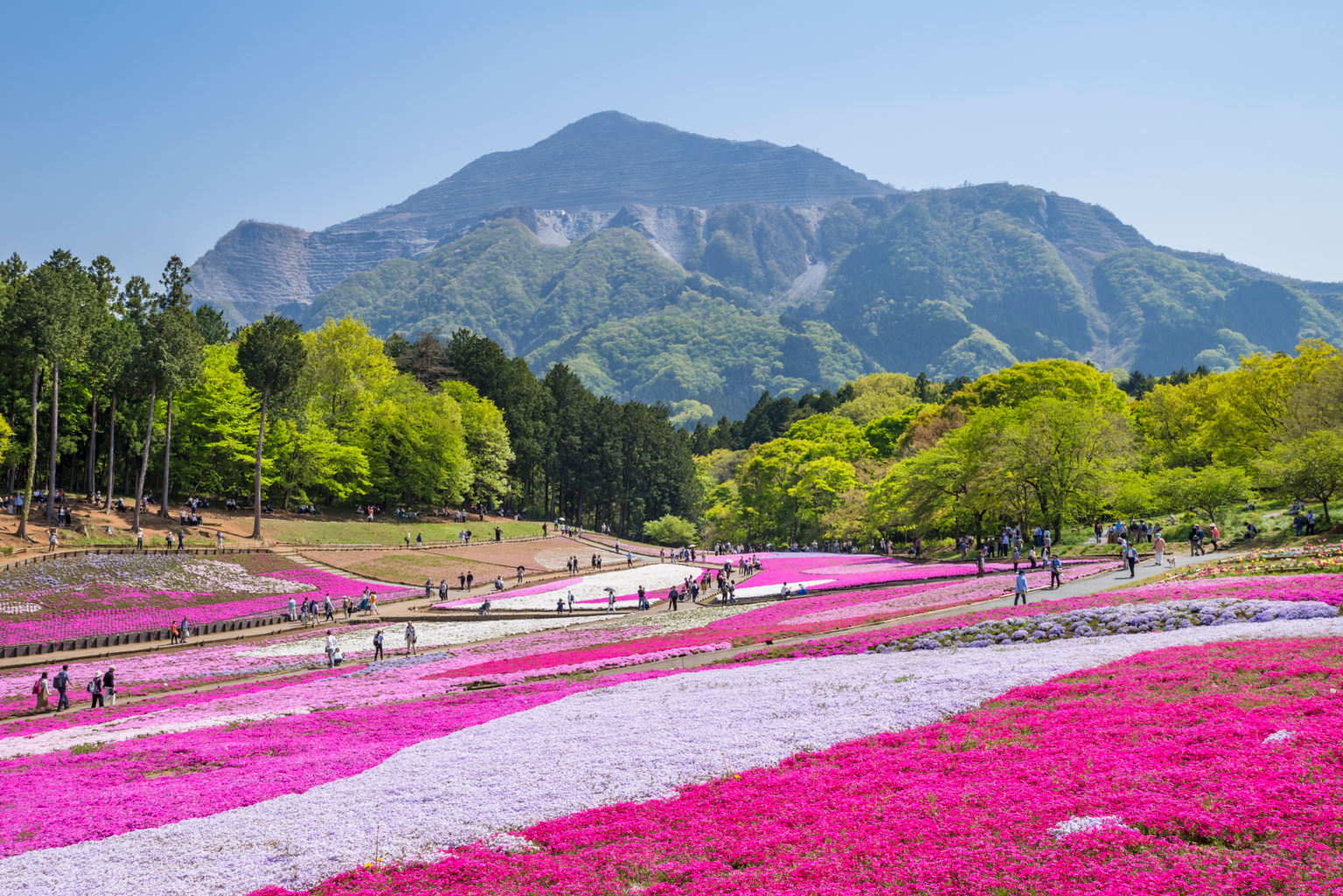
Copyright (c) 2018 picture cells/Shutterstock
3. Hitsujiyama Park
Chichibu is one of the most popular areas to visit in Saitama Prefecture and one of the reasons for that is Hitsujiyama Park. The best time to go, if you don’t mind large crowds, is unquestionably between mid-April and early May. That is when the famed moss phlox (shibazakura) come into bloom. The vivid purple, pink and white flowers spread over the large field like a carpet. First planted in 2000, there are nine varieties and around 400,000 individual flowers. During our last visit there, they didn’t look quite as spectacular as some of the pictures you see online, but it’s still well worth visiting.
Access: A limited express from Ikebukuro to Seibu-Chichibu Station takes just under 80 minutes. From there, it is a 20-minute walk.
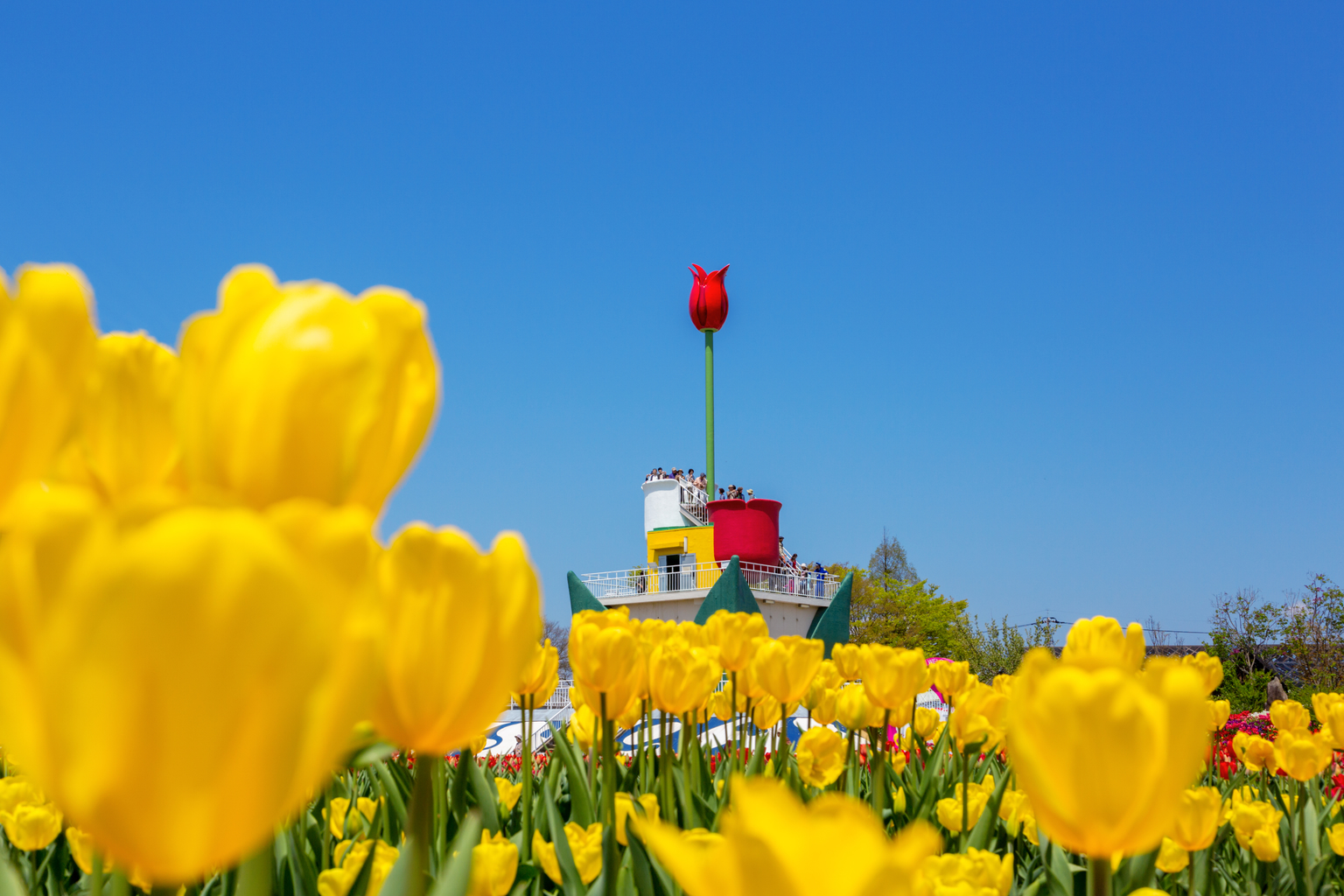
Copyright (c) 2019 onemu/Shutterstock
4. Tonami Tulip Park
For more than seven decades, visitors have been flocking to Tonami in Toyama Prefecture for the city’s annual tulip festival. Close to three million tulips will be on display at the two-week fair, which begins on April 22. The bulbous plant was first cultivated in the area more than a century ago. Tonami’s now recognized as the leading producer of tulip bulbs in Japan. At the festival, which costs ¥1,300 for adults to enter, guests can enjoy a view of the whole park from the 22-meter tulip tower. Tonami is the sister city of Lisse in the Netherlands, famed for Keukenhof, one of the largest spring gardens in the world.
Access: Take the Hokuriku Shinkansen from Tokyo to Shin-Takaoka Station (around 2hrs 30min). Then get on the Johana Line to Tonami Station (approximately 20 minutes).
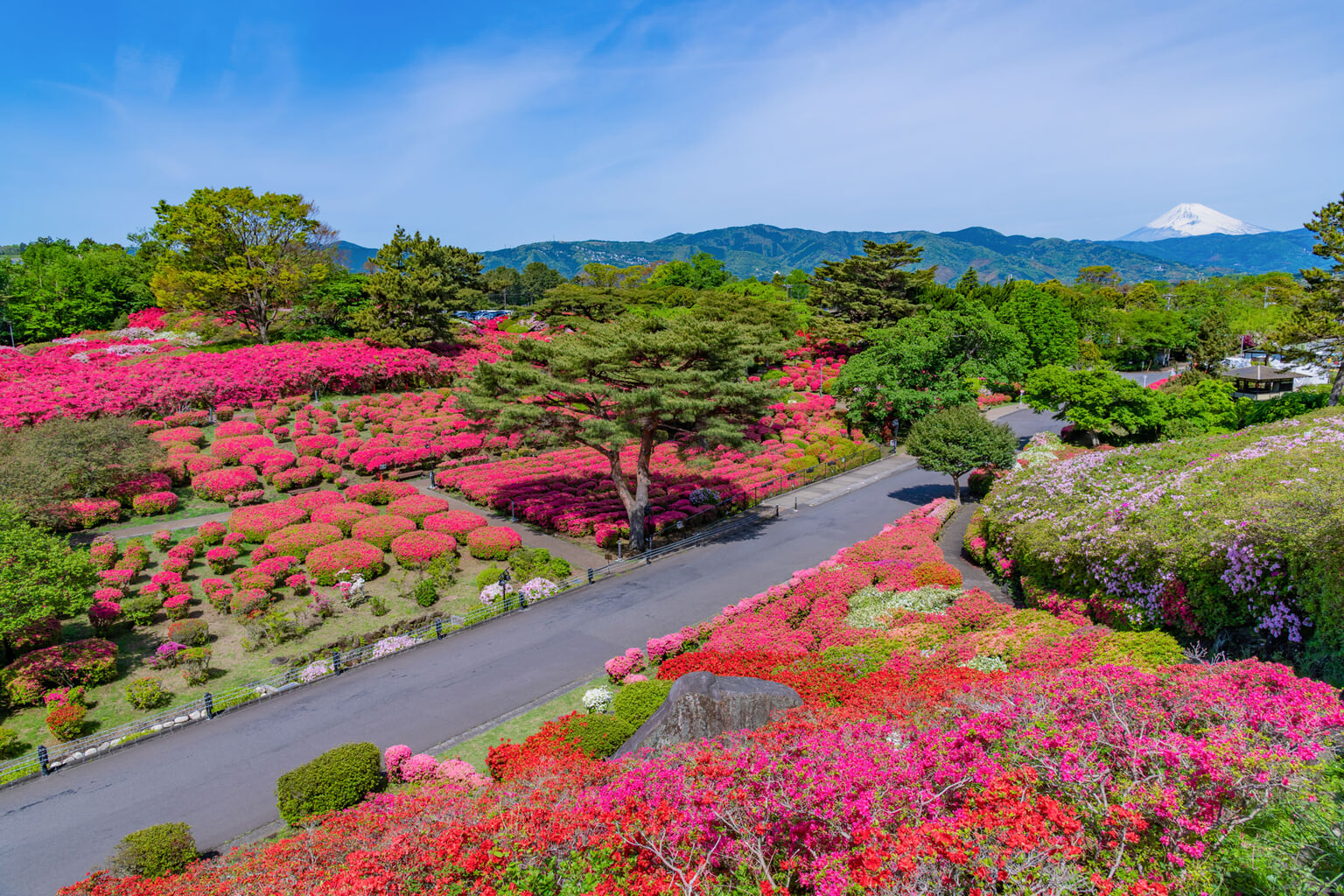
Copyright (c) 2019 Princess_Anmitsu/Shutterstock
5. Komuroyama Park
When it comes to azaleas, there are many recommended destinations throughout Japan including Tsutsujigaoka (Azalea Hill) Park in Gunma Prefecture, Higashi Village in Okinawa and in the capital, the garden of Nezu Shrine. Our favorite, though, is Komuroyama Park in Ito City, Shizuoka Prefecture. Located on Mount Komuro, around 321 meters above sea level, there’s a wooden deck offering a splendid 360-degree panoramic view of Izu Peninsula and Sagami Bay. During Golden Week, you can see around 100,000 azaleas in 40 different varieties. The highlight is the Azalea Tunnel, located in the center of the park. Another popular time to visit is in February and March when 4,000 camellias are in bloom.
Access: A direct limited express train takes you from Tokyo to Ito Station in under two hours. Then, it’s a 40-minute bus ride or 15 minutes in a taxi.
氷川丸-2.jpg)
Roses at Yamashita Park
6. Yamashita Park
More than 600,000 flowers are on display in Yokohama this spring for the annual Garden Necklace Yokohama festival. It kicked off on March 26 and runs until June 12 at various locations throughout Japan’s second most populous city. One of the most convenient and aesthetically pleasing venues is Yamashita Park. The 750-meter stretch of land in front of the waterfront is a popular place to visit all year-round, but is at its vibrant best at this time of year. There’s a wide range of flowers on display, including close to 2,000 roses. Look out also for the Garden Bear, the cute little green mascot with flowers for hair.
Access: Yamashita Park is a five-minute walk from Motomachi-Chukagai Station, which is an eight-minute train ride from Yokohama Station.
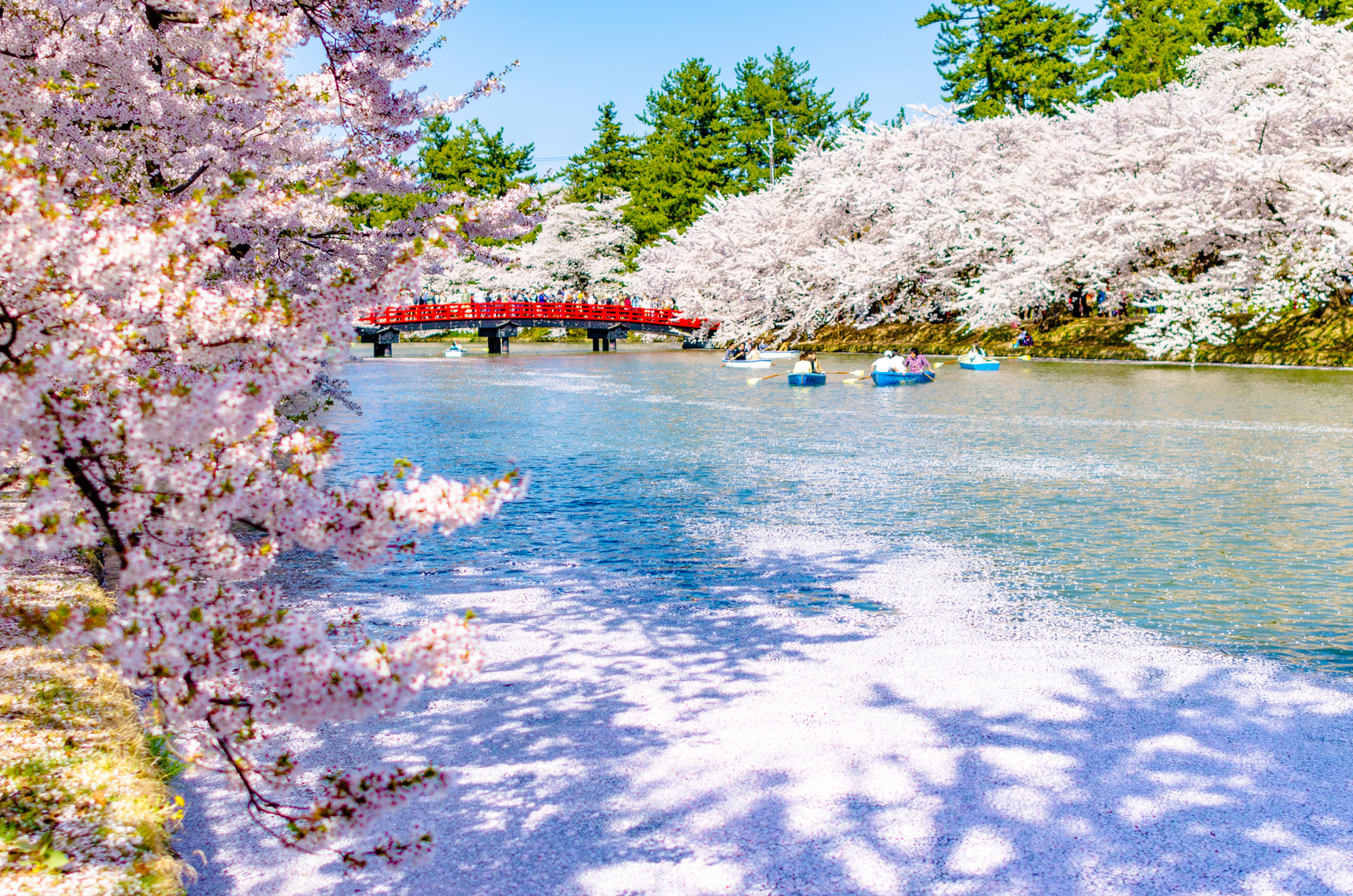
Copyright (c) 2018 Taromon/Shutterstock
7. Hirosaki Castle Park
While sakura season may have come and gone in the Kanto region, there’s still time to see Japan’s unofficial national flower in the north of the country. Hirosaki Castle Park in Aomori Prefecture is arguably one of the best destinations when it comes to cherry blossom viewing. There are around 2,600 cherry trees of more than 50 varieties in the park. With the imposing 400-year-old castle in the background, it really is a wondrous sight. According to the sakura forecast, the best time to go this year is between April 21 and 29. After blooming, the falling cherry blossoms (known as “hanafubuki”) create an attractive pink carpet on the moat.
Access: Take the Tohoku Shinkansen from Tokyo to Shin-Aomori, then switch to the Ou Line for Hirosaki Station, followed by a short bus ride. It takes just over four hours in total
Feature Image: Copyright (c) 2022 aki_tk/Shutterstock.

